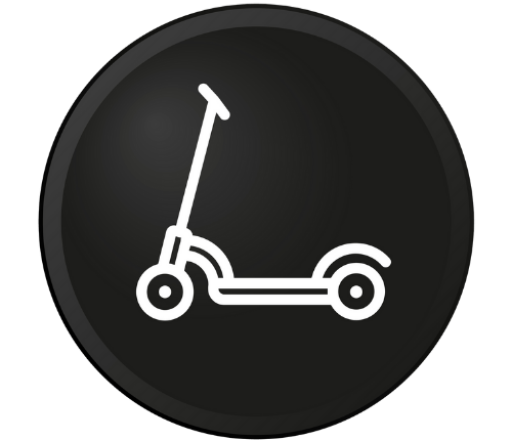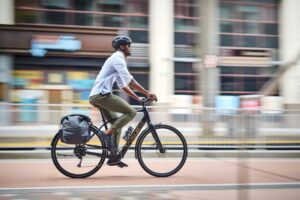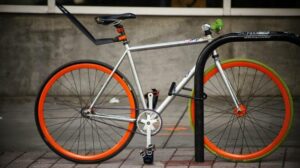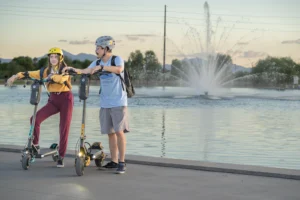Cycling in the city is an efficient, eco-friendly, and enjoyable way to get around. However, urban cycling presents unique challenges that require awareness, preparation, and skills to navigate safely and confidently.
This article provides essential tips to help you become a savvy urban cyclist, ensuring your rides are safe, efficient, and enjoyable.
Preparation and Planning
- Choose the Right Bike:
- Comfort and Fit: Ensure your bike is comfortable and properly fitted to avoid discomfort and injury. Visit a local bike shop for professional fitting.
- Type of Bike: Select a bike suited for urban riding, such as a hybrid or city bike, which offers a balance of speed and comfort.
- Plan Your Route:
- Research: Use bike maps or online resources to find bike-friendly routes with dedicated lanes and less traffic.
- Test Rides: Try different routes during less busy times to find the safest and most efficient path.
- Check Your Bike:
- Pre-Ride Inspection: Before each ride, check your tires, brakes, chain, and lights to ensure everything is in working order.
- Maintenance: Regularly clean and maintain your bike to keep it in top condition.
Safety Gear
- Wear a Helmet:
- Fit and Comfort: Choose a helmet that fits snugly and comfortably. Look for models with ventilation and adjustable straps.
- Use Lights and Reflectors:
- Front and Rear Lights: Ensure you have bright front and rear lights for visibility, especially in low-light conditions.
- Reflective Gear: Wear reflective clothing or add reflective stickers to your bike to increase visibility.
- Dress Appropriately:
- Weather-Appropriate Clothing: Wear layers to adapt to changing weather conditions. Waterproof gear is essential for rainy days.
- Comfortable Attire: Choose breathable, moisture-wicking fabrics and avoid loose clothing that could get caught in the bike.
Riding Techniques
- Stay Visible:
- Positioning: Ride where you are most visible to drivers, typically in the center of the lane or bike lane.
- Avoid Blind Spots: Stay out of vehicle blind spots, especially near large trucks and buses.
- Communicate:
- Hand Signals: Use clear hand signals to indicate turns and stops to other road users.
- Eye Contact: Make eye contact with drivers at intersections to ensure they see you.
- Ride Predictably:
- Consistent Speed: Maintain a steady speed and avoid sudden swerves or stops.
- Follow Traffic Laws: Obey all traffic signals and signs. Ride in the direction of traffic and use designated bike lanes when available.
- Be Cautious at Intersections:
- Slow Down: Approach intersections slowly and be prepared to stop.
- Watch for Turning Vehicles: Be aware of vehicles turning left or right and anticipate their movements.
Navigating Urban Obstacles
- Dooring Hazards:
- Watch Parked Cars: Ride at least a door’s width away from parked cars to avoid being hit by an opening door.
- Be Alert: Look for signs of occupants in parked cars, such as brake lights or movement.
- Potholes and Debris:
- Scan the Road: Continuously scan the road ahead for potholes, debris, and other obstacles.
- Navigate Carefully: Signal and safely move around obstacles without sudden swerves.
- Pedestrians:
- Yield to Pedestrians: Always yield to pedestrians at crosswalks and be mindful of those crossing unexpectedly.
- Use Bell or Voice: Alert pedestrians of your presence with a bell or a polite verbal warning.
Security Tips
- Lock Your Bike:
- Sturdy Lock: Use a high-quality U-lock or chain lock to secure your bike frame and wheels.
- Lock Locations: Choose well-lit, busy areas for locking your bike. Avoid leaving it in isolated or poorly visible spots.
- Remove Accessories:
- Take Valuables: Remove lights, bags, and other valuable accessories when leaving your bike unattended.
- Secure Attachments: Ensure any remaining accessories are securely attached to prevent theft.
Health and Fitness Tips
- Stay Hydrated:
- Bring Water: Carry a water bottle to stay hydrated, especially on longer rides.
- Drink Regularly: Take small sips of water regularly to avoid dehydration.
- Maintain Proper Nutrition:
- Eat Balanced Meals: Ensure you have a nutritious diet to fuel your rides.
- Energy Snacks: Carry energy bars or snacks for longer rides to maintain energy levels.
- Stretch and Warm-Up:
- Pre-Ride Stretching: Perform light stretches to warm up your muscles before riding.
- Post-Ride Cool Down: Stretch after your ride to prevent stiffness and improve flexibility.
Conclusion
Urban cycling can be a rewarding and efficient way to navigate the city, provided you take the necessary precautions and equip yourself with the right knowledge and gear.
By following these tips, you can ensure your rides are safe, enjoyable, and beneficial to your overall well-being. Embrace the joy of urban cycling and transform your daily commute into a positive experience.



